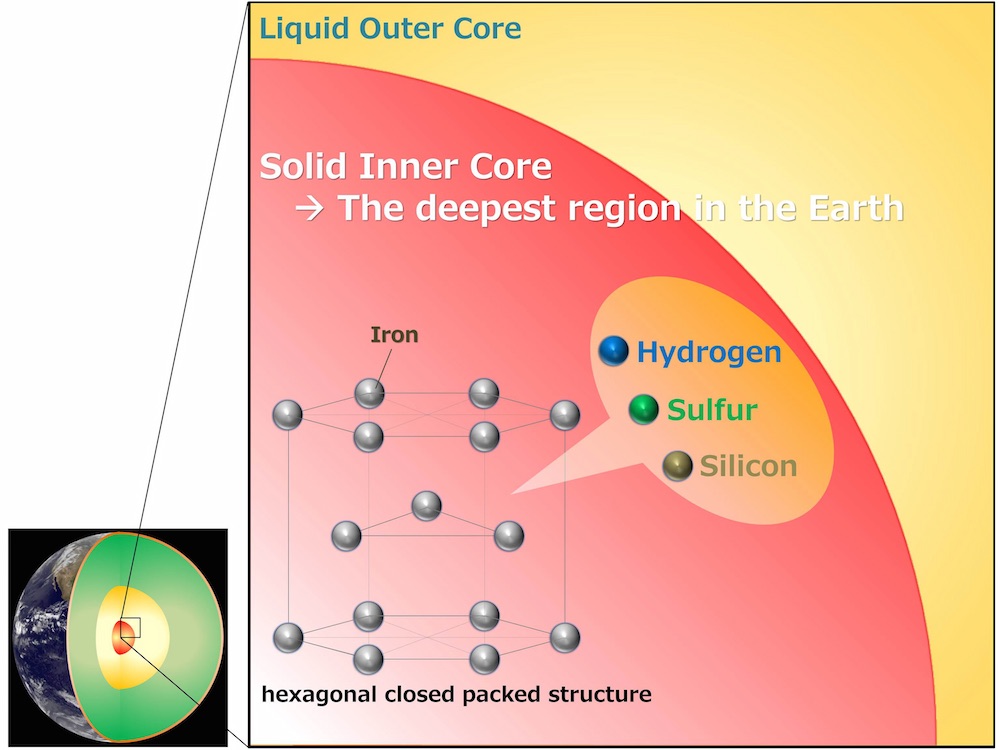Earth's Fiery Depths Filled with Brimstone

Earth's inner core is a metallic mix of iron and light elements such as sulfur, hydrogen and silicon, a new study finds.
This isn't the first time scientists have proposed that Earth's fiery depths are filled with brimstone, another name for sulfur. That's because the inner core is less dense than it would be if the solid metal ball were pure iron. However, the new research further confirms the idea with tests of pure iron at the extreme temperatures and pressures found in the inner core.
Researchers at Tohoku University in Sendai, Japan, mimicked the inner core in a laboratory equipped with a laser-heated diamond anvil cell. A small crumb of pure iron was squeezed between two diamond-tipped anvils to create high pressure and blasted with laser beams to boost the temperature. The experiment reached 163 gigapascals (about 1.6 million times the pressure at sea level) and about 5,000 degrees Fahrenheit (3,000 kelvins, or about 2,700 degrees Celsius). [Religion and Science: 6 Visions of Earth's Core]
During the experiment, the team measured how fast sound waves traveled through iron at these conditions. If the Earth's inner core was pure iron, then the speed of sound waves traveling through the core should be similar to the experimental results.
But instead, the researchers discovered the velocity of sound waves through Earth's actual core is lower than if it were made only of iron. The data and observations match more closely if 5 to 10 percent of the core's weight is a mix of sulfur, hydrogen and silicon, the researchers report today (Feb. 26) in the journal Science Advances.
"This result helps us constrain the candidate elements in the core," said lead study author Tatsuya Sakamaki, of Tohoku University. "We already know that the Earth's core contains some amount of light elements because the density of the core is smaller than that of iron. In this study, we newly show that the velocity of the core is also smaller than that of iron," Sakamaki told Live Science in an email interview.
Although scientists cannot directly measure the Earth's core, they can estimate its size and composition with models based on how fast earthquake waves zip around inside the planet.
Sign up for the Live Science daily newsletter now
Get the world’s most fascinating discoveries delivered straight to your inbox.
Measuring the amount of light elements in the inner core can help add detail to models of Earth's violent formation, the researchers said. Scientists think Earth was bombarded by giant impacts late in its birth cycle. The chemistry of the core relates to the size of the cataclysmic collisions and the temperature of the magma ocean that emerged afterward.
The core formed as metals sunk out of the magma ocean, trickling down toward the center of the planet — a process that is sensitive to temperature. "In other words, the core composition may reflect the temperature condition of the magma ocean," Sakamaki said. Knowing the temperature of the roiling sea of molten rock can help pin down the size of early impacts, according to Sakamaki.
Follow us @livescience, Facebook& Google+. Original article on Live Science.










